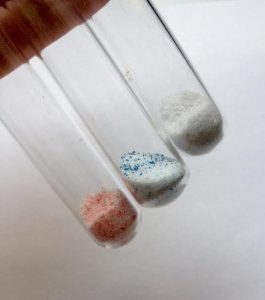In this post, Gabriela Kalcikova talks about their recently published paper “Wastewater treatment plant effluents as source of cosmetic polyethylene microbeads to freshwater”.
Within the last years, microplastics have been widely found in marine and freshwater ecosystems. Microplastics are small plastic particles with a size below 5 mm. One of their entry routes into the environment is initiated from consumer products, such as plastic microbeads that are used in some cosmetic products as abrasives. After application these are washed into the sewage, can travel through wastewater treatment plants and end up in the aquatic environment. Once microplastics have entered aquatic ecosystems, they cannot easily be removed. They float on the water surface, disperse in the water body and accumulate in sediments. Microplastics interact with the environment and organisms in a variety of ways and may thereby cause negative effects.
In our study we characterized physical properties of microbeads from commercially available body and facial scrubs. We estimated the quantity of microbeads that can be released daily following consumer application. Furthermore, we investigated the fate of microbeads in a model wastewater treatment plant and estimated their emission via wastewater treatment plant effluents into rivers.
All microbeads from the body and facial scrubs were made out of white polyethylene powder with some portion of coloured particles. Concentrations of microbeads in scrubs ranged from 0.42 – 11.12 g/100 mL of product. Particle sizes ranged between 20 – 1000 µm, but most of the particles were sized up to 100 µm.
According to a consumer survey in Ljubljana, Slovenia, citizens release on average 15.2 mg of microbeads per person per day into the sewage. Although our model wastewater treatment plant was very efficient (77%) in removing microbeads, there are still approximately 1 kg of microbeads released daily into the Ljubljanica River. This results in a concentration of 21 microbeads/m3 in the river water. We thus argue that cosmetic products can be an important source of microplastics for freshwater systems, and addition of microbeads into cosmetics should be reconsidered.
The paper was authored by Gabriela Kalcikova, Branko Alič, Tina Skalar, Mirco Bundschuh and Andreja Žgajnar Gotvajn and published in Chemosphere.

